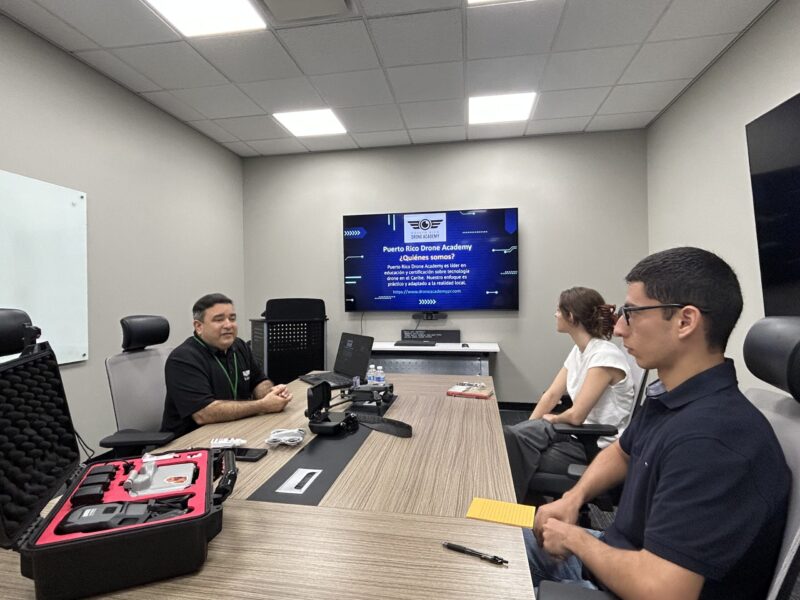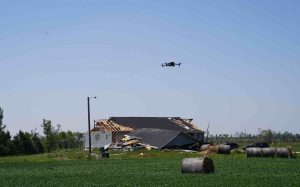LIFT Launches Drone Innovation Program in Puerto Rico: A Guide for Innovators, Students, and the Drone-Curious
Introduction: Why Puerto Rico, Why Now?
Envision a Caribbean hub where shimmering blue seas meet next-gen technology, where budding engineers innovate with drones poised to track hurricanes, secure our ports, or transform supply chains. No, this isn’t a sci-fi flick—this real-world vision fuels the LIFT Drone Innovation Program, introduced in July 2025 in Puerto Rico.

Supported by the U.S. Department of Defense, LIFT, an advanced manufacturing innovation institute, set its new base in Caguas, Puerto Rico to advance drone technology and workforce training. This move underscores Puerto Rico’s emerging status as an innovation hub with strategic importance in aerospace and defense.
What Is LIFT and Why Their Drone Program Matters
LIFT, known as Lightweight Innovations for Tomorrow, is a unique Detroit-based partnership between the DoD, industry giants, and universities. It aims to solve key technology and workforce challenges in America by advancing manufacturing technologies and fostering the next wave of tech talent.
Puerto Rico became a critical focus in 2023, bolstered by a $2-million investment from the DoD’s Manufacturing Technology Program. Now buzzing with innovation, LIFT’s Caguas location empowers students and engineers to prototype drone solutions for future challenges.
Students at the Heart: Hands-On Drone Innovation
This program isn’t about passive lectures. It’s an immersive, hands-on bootcamp in drone technology for tomorrow’s leaders.
Key Activities:
- Design, Build, Test: Students from the University of Puerto Rico at Mayagüez (UPRM) are creating lightweight drone attachments for environmental monitoring, focusing on modular sensor pods to track air quality and coastal changes.
- Prototyping Dream Workshop: Utilizing Arduino microcontrollers, 3D printing, and advanced modeling, teams rapidly design and test their drones in real-world missions.
- Workforce-Ready Skills: From inception to flight testing, students gain vital experience in aerospace and data skills, grooming them for high-tech careers.
- Workshops and Partnerships: Partnering with the Puerto Rico Drone Academy, the program blends formal education with fieldwork and technical mentorship.
Advice for Students: This experience will undoubtedly enhance your resume and propel your career in the drone or aerospace fields.
What Makes Puerto Rico Ideal for Drone Innovation?
Puerto Rico offers unique advantages for drone innovation:
- Strategic Location: As a crossroads of the Americas, it presents coastal and tropical test conditions alike to global scenarios.
- Growing Talent Pool: Local universities, known for strong engineering programs and bilingual graduates, are prime sources of talent.
- Government Support: With DoD investments and strong local backing, the region attracts startups and researchers.
Humor Note: Discussing the perks of doing R&D in shorts, one LIFT team member highlights Puerto Rico’s appeal.
Real-World Impact: Beyond the Classroom
The innovations extend beyond academia, addressing critical real-world needs:
- Port Security: Drones ensure rapid shipping hub inspections to spot threats or inefficiencies.
- Supply Chain Visibility: Monitoring infrastructure and tracking assets become more efficient.
- Environmental Monitoring: Drones can monitor air quality post-storm or detect illegal dumping in hard-to-reach areas.
Case Study: In a recent challenge, students designed a modular sensor suite for air quality monitoring along Puerto Rico’s southern coast, proving their prototype’s endurance and practical value.
How Does This Help the Local Community (and Beyond)?
This initiative offers multiple benefits:
- Workforce Development: Local students acquire sought-after skills, making them competitive in aerospace, defense, and tech sectors.
- Economic Growth: Launching Puerto Rico as a drone hub fosters startups, investments, and job creation.
- National Security: With DoD involvement, program outcomes extend far beyond academic pursuit, bolstering America’s industrial and security foundations.
Interesting Fact: Many LIFT alumni have secured positions at prestigious organizations like NASA, Boeing, Lockheed Martin, or have started their own companies.
Regulatory Know-How: Flying Drones in Puerto Rico
Aspired drone pilots must be aware of these FAA rules applicable in Puerto Rico:
- Drone Registration: Mandatory for drones over 250 grams.
- Remote ID: All registered drones must have their ID signal, akin to a digital license plate.
- Pilot Certification: Commercial use requires an FAA Part 107 Remote Pilot Certificate.
- Operational Limits: Maximum altitude of 400 feet, visual line of sight, and yielding to manned aircraft are mandatory.
- No-Fly Zones: Certain areas such as military bases must be avoided, with apps like B4UFLY providing guidance.
Becoming Certified: To earn an FAA Part 107 Certificate, one must be at least 16, proficient in English, and pass the knowledge test and TSA clearance.
Tip for Enthusiasts: Stay updated with regulations, especially the evolving Remote ID requirements.
LIFT’s Broader Vision: Community and Collaboration
LIFT’s Puerto Rico initiative exemplifies a strategic vision centered on three pillars:
- Talent Development: Preparing individuals for high-paying careers in advanced manufacturing and aerospace.
- Industry Partnerships: Collaborating directly with businesses to pilot breakthroughs.
- Public-Private Synergy: Fostering partnerships across sectors ensures that research translates into tangible solutions.
Dr. Robert Shaner, LIFT’s Chief Education Officer, emphasizes, “By nurturing local talent and collaboration, Puerto Rico becomes a national security and economic resilience driver.”
Human Stories: The “Why” Behind the Tech
- Isabel, UPRM Student: “Prior to LIFT, I didn’t foresee the impact my coding could have on hurricane recovery or environmental conservation. Now, I recognize drones as transformative tools.”
- Luis, Drone Academy Mentor: “We’re teaching more than just drone operation; we’re instructing on problem-solving and leadership.”
What’s Next: Trends and Opportunities
The LIFT initiative marks only the commencement of burgeoning prospects in Puerto Rico, including:
- FPV Drones: Ideal for thorough inspections and immersive training.
- Drone Delivery: Leveraging the island’s geography for rapid delivery of medical items or supplies is becoming reality.
- AI and Data Analytics: Enhanced drones increase decision-making capabilities.
Industry Outlook: By 2030, the commercial drone market is expected to surpass $40 billion, with applications multiplying in environmental and security sectors.
For Enthusiasts, Students, and Businesses: How to Get Involved
Get involved in the evolving drone ecosystem through:
- Students: Pursue internships and projects with LIFT to gain a competitive edge.
- Educators: Integrate real-world challenges in collaboration with LIFT.
- Businesses: Partner with LIFT for R&D, workforce training, or large-scale drone solution trials.
Pop-Culture Insight: If drones in “Black Panther” or “Spider-Man: Far From Home” captured your imagination, remember that Puerto Rico could host your next drone tech breakthrough.
Conclusion: A New Era for Drones, Talent, and Puerto Rican Innovation
The LIFT Drone Innovation Program spearheads a movement—a commitment to arming future talents with opportunities to innovate meaningfully. From engineers to entrepreneurs, the transformative power of drones catalyzes change and solution-building right in Puerto Rico, unlocking tremendous potential for the future.













